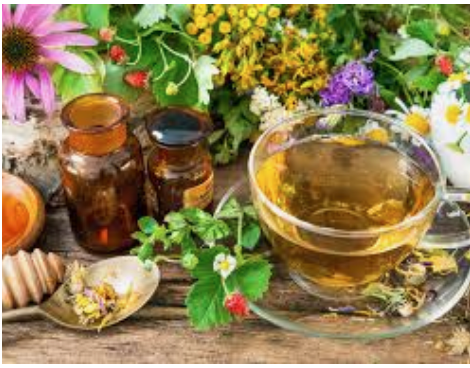CARRIER OILS

Here is a list of eleven different oil options for creating your herbal oil, though there are even more out there! No matter what you choose, I highly suggest using a high-quality, unrefined, cold-pressed oil. Certified organic is all the better. The goal is to create a healing medicinal oil after all!
Oils are rated on a comedogenic scale from 1 to 5. Those on the lower end of the scale are considered “non-comedogenic” and least likely to clog your pores. 3 means moderately likely, and 5 is very likely to clog your pores. All of these oils contain a high amount of essential omega fatty acids, which help rejuvenate, nourish, and hydrate skin. You may also choose to mix a couple different oils to create a custom blend!
- Grapeseed Oil is antimicrobial, very low on the comedogenic scale (1), and can help reduce acne. It is lightweight, non-greasy, and absorbs easily. Yet it may not provide quite as much moisture as some other oils on the list, making it a good choice for oily skin. It is edible cold or at room temperature, but not recommended for high-heat cooking.
- Sweet Almond Oil is a slightly stronger moisturizer than jojoba and grapeseed (2 on the comedogenic scale), and a good choice for dry and sensitive skin, including baby skin. It works to reduce excess sebum, inflammation, scars, dryness, eczema, and acne. Sweet almond oil can also lighten skin tone, dark circles, and support an even complexion. It is edible, but best to avoid heating it.
- Jojoba Oil is rated a 2 but still considered non-comedogenic. It is lightweight, non-greasy, and absorbs very easily because it has a similar chemical structure as our skin’s natural oils. Jojoba oil works to break down and reduce excess sebum – making it a great option for oily or combination skin! Some people experience an initial “purge” (small breakouts) when they first begin to use jojoba oil, only because it is excellent at unclogging pores and removing impurities. Studies also show it is anti-inflammatory and promotes wound healing. An added perk is its very long shelf life of up to 5 years. Note that jojoba oil is not edible.
- Rosehip Seed Oil is high in essential fatty acids, Vitamin E and Vitamin A that increase cell turnover. It helps to heal scars, and decrease discoloration and fine lines. Rosehip Seed oil rates 2 on the comedogenic scale, is lightweight, and absorbs easily. It is not recommended for internal use, and has a shorter shelf life of only 6 months.
- Extra Virgin Olive Oil (EVOO) is extremely hydrating and nourishing for dry skin, and is a bit thicker than some other drier oils on the list. Because it is edible, it is a good choice for a multi-use lavender oil. It is a 2 on the comedogenic scale, but can occasionally cause break-outs for those with acne-prone skin if applied too heavily. EVOO contains a rare antioxidant called hydroxytyrosol which protects against free radical damage to the skin and is considered an anti-aging compound.
- Avocado Oil is quite thick and oily, but does a great job at providing deep moisture. Avo oil can also aid in reducing scars, inflammation and age spots while significantly softening skin. It rates a 3 on the comedogenic scale, and is edible.
- Coconut oil is praised for its benefits in the natural beauty world! It is incredibly moisturizing and contains caprylic acid along with other compounds that provide strong antibacterial, antiviral, anti-fungal, and anti-inflammatory properties. Yet virgin coconut oil is tricky to use for infusions since it is mostly solid at room temperature, and is also fairly high (4) on the comedogenic scale. In contrast, fractionated coconut oil is liquid at room temperature (great for infusions) and significantly less likely to clog pores.
- Hemp Seed Oil is the least comedogenic of all the carrier oils on this list so far, ranking in at a big fat zero! It is a very light, “dry” oil and highly absorbable due its closely similar amino acid and fat profile as our natural skin oils. Hemp oil is a great choice for any skin type, reduces inflammation, fine lines and acne – and is edible to boot!
- Argan Oil, also known as Moroccan oil is as gentle as it is highly moisturizing – another zero on the comedogenic scale! If you’ve been around the beauty product isle, you’ve seen this oil in many products – especially hair products! On skin, argan oil is proven to prevent sun damage, reduce fine lines and excess oil production, soften skin, and potentially even treat stretch marks. There are both edible and cosmetic-only types of argan oil. Argan is my current favorite oil to use on my face!
- Safflower Oil is a great choice for both dry, irritated skin or oily, acne-prone skin alike. It is gentle, a 0 on the comedogenic scale, lightweight, but highly moisturizing and healing. Safflower oil balances natural oil levels and helps unclog pores. However, those with allergies to the ragweed family should avoid this oil. It is edible both at low and high temperatures.
- Sunflower Seed Oil has very similar properties to Safflower oil, listed above. However, it is even higher in Vitamin E, which is a powerful antioxidant that fights free radicals and reduces or repairs skin damage. Note that sunflower seed oil comes in either high, moderate, and low oleic acid content. Choosing an oil on the lower end will make it close to zero on the comedogenic scale! Sunflower Seed oil is edible.
- Sesame Oil has the following properties, which help to make it a beneficial oil for your skin:
- Antioxidant. This means it has the ability to fight damage by free radicals, or unstable molecules that can harm the cellular structure of your skin.
- Antimicrobial. This means it can kill harmful microorganisms or stop their growth.
- Anti-inflammatory. This means it can reduce inflammation and swelling.
Using the oil
You’ll need:
- Dried, coarsely chopped herbs. Calendula (pictured), comfrey, plantain, St. John’s Wort and lavender are popular ingredients for soothing oil infusions. Got fresh herbs? Learn how to dry them here. It’s easiest to work with dried herbs, since fresh ones contain water which may lead to rotting or mold.
- Oil. Olive and sunflower oils are good choices. Be sure to use fresh oil so that the infusion will last longer.
- A glass jar. Canning jars work nicely, but any jar with a lid will do.
- A strainer and cheesecloth or fine-weave towel.
- Bottle or jar for storage. Amber glass blocks light and may help your infusion last longer.
-
How to make herb-infused oil:
-
- Prepare your jar. Make sure the jar is clean and very dry. Again, any water in the jar can lead to spoilage.
- Fill the jar to the top with herbs.
- Pour oil over the herbs slowly. Using a chopstick or knife, move the herbs around to make sure all air pockets are filled with oil. Add enough oil to completely cover all the herbs, filling right up to the brim of the jar.
- Cover the jar, give it a few shakes, and put it in a cool place inside your house. Every now and then, give your jar a shake. It will be ready to use in 3-6 weeks. The jar may ooze or leak a little, so place it on a plate or towel.
- Strain the oil into your storage bottles through a cloth-lined strainer. Give the herbs a final few squeezes to get the last of that herb-soaked goodness.
- Cork and label your bottles. The oil should last at room temperature for up to a year; two years if you add a capsule or two of vitamin E, a natural preservative.
Herbal oils make lovely gifts and can be used as a massage oil or added to the bath.
